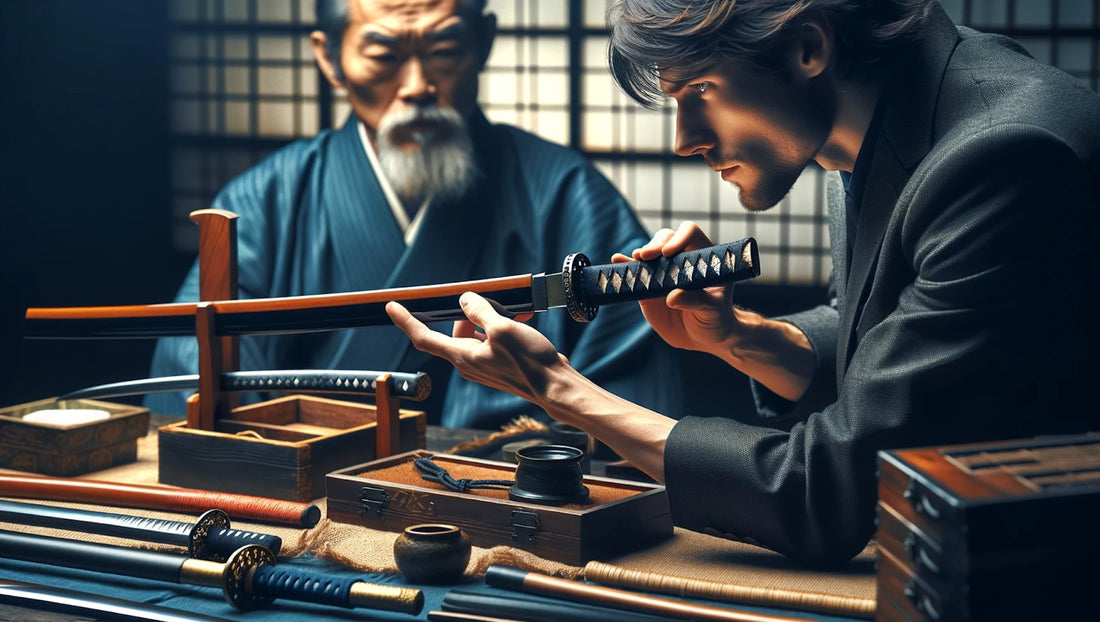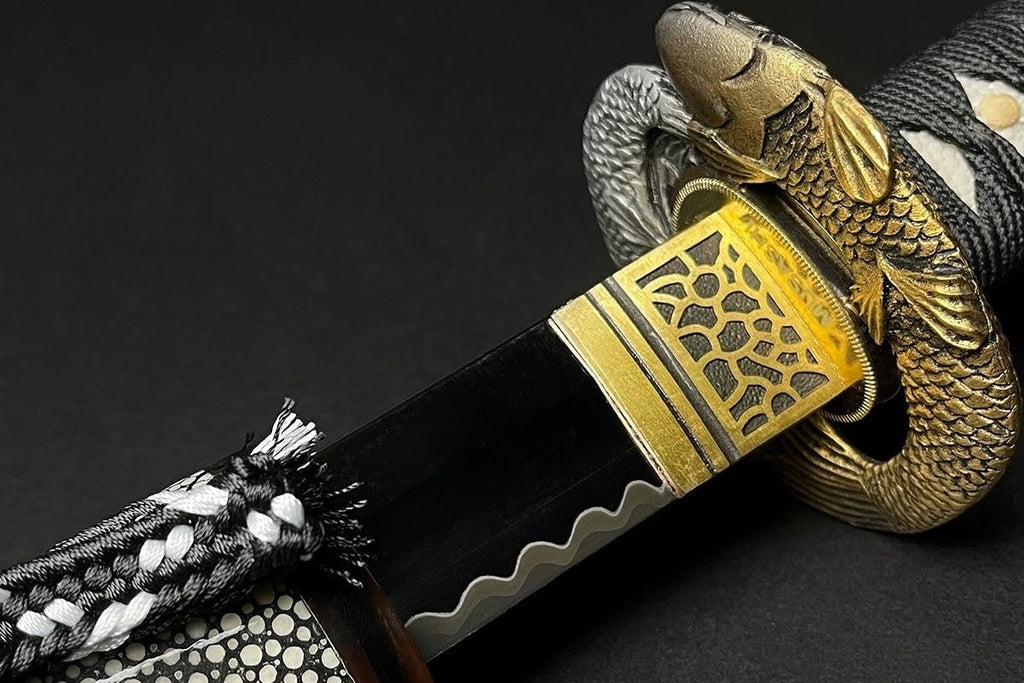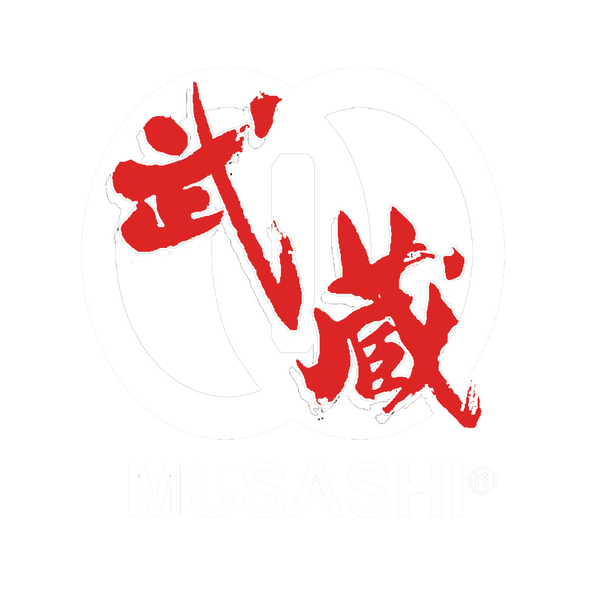
With its sleek curvature and razor-sharp edge, the katana transcends its role as a mere weapon to become a symbol of artistry, honor, and the bushido spirit within Japanese culture. Esteemed by collectors, martial arts aficionados, and history buffs alike, its allure is undeniable.
Yet, as the market burgeons with options ranging from ornamental, imitated renditions, and genuine pieces, finding the katana of your choice becomes a formidable challenge. This discourse aims to equip potential buyers with the necessary insights to distinguish between the options and find the perfect katana.
By emphasizing the importance of historical context, meticulous craftsmanship, and verification techniques, readers will be empowered to make informed acquisitions, ensuring their collections are graced with items that truly reflect the legacy and craftsmanship of traditional Japanese sword-making - a commitment we follow at Musashi Swords.
The History and Significance of the Katana
Tracing its origins back to the late Kamakura Period (1185–1333), the katana is more than a weapon; it's a testimony to the zenith of Japanese metalworking skill and the samurai's way of life. As the samurai class rose, the demand for a blade that could be drawn and used for combat in a single motion became paramount. With its distinctive curved blade, the katana fulfilled this need, departing from the straight swords used previously.
Crafting a katana was considered a sacred art, involving rituals that imbued the sword with a spiritual essence. Each blade was the culmination of painstaking labor, forged from tamahagane steel, known for its purity and resilience. The swordsmiths of yore were revered artisans, their techniques shrouded in secrecy and passed down through generations, ensuring each katana was a unique work of art.
Beyond its battlefield utility, the katana embodied the soul of the samurai. It represented loyalty, honor, and a commitment to the ethical conduct known as bushido. This philosophical framework emphasized virtues such as courage, integrity, and benevolence, with the katana as a constant reminder of the wearer's duty to uphold these principles.
In contemporary times, the katana has transcended its martial origins to become an icon of Japanese heritage and craftsmanship. Collectors and enthusiasts seek authentic pieces for their historical value and the artistry and skill they represent.
However, the availability of various imitated forms has made the pursuit of genuine katanas a complex endeavor, underscoring the importance of understanding their history and the hallmarks of true craftsmanship.
Buyers can approach their quest with a deeper respect for these magnificent artifacts by appreciating the katana's storied past and cultural significance. This reverence for tradition and quality serves as a foundation for navigating the market, enhancing one's ability to identify swords that genuinely embody the spirit of the samurai and the unparalleled craftsmanship of Japan's swordsmiths.

Craftsmanship and Authenticity Marks
Genuine katanas are masterpieces of traditional Japanese sword-making, reflecting centuries of refined techniques and unparalleled dedication. Creating an authentic katana is labor-intensive, requiring skilled artisans to meticulously shape, fold, and temper the steel.
The telltale characteristic of an original katana lies in its construction material: tamahagane, a type of steel made from iron sand, known for its purity and resilience. This steel is carefully folded and forged, which could take several weeks to months, ensuring the blade's exceptional strength and flexibility.
However, one should know that tamahagane is primarily utilized in crafting traditional swords and is less frequently employed in modern times owing to its high susceptibility to defects and the considerable time and effort required for forging. Contemporary swords are predominantly made from various forms of high-carbon steel, which allows them to retain a sharp edge and offers resistance against damage.
Another hallmark of authenticity is a distinct wave-like pattern on the Hamon blade. This visual effect, achieved through differential cooling during the tempering process, signifies the sword's genuineness and showcases the smith's skill. Each Hamon is unique, as a fingerprint that links the sword to its maker.
The nakago, or tang, of the katana (the portion of the blade that extends into the handle) also bears crucial indicators of authenticity. Traditionally, smiths inscribe their signature and sometimes the date of creation here. Over time, the nakago develops a patina that cannot be replicated artificially, serving as a testament to the sword's age and lineage.
Furthermore, genuine katanas exhibit a balance reflecting the use of their intended weapons. The weight distribution, the blade's curvature, and the edge's alignment are meticulously crafted to enhance performance. This balance is difficult to replicate in imitative pieces, which prioritize aesthetics over functionality.
Common Features of Imitation Katanas
In your search for a katana, you'll find that while some models capture intricate designs, they may only sometimes match the exceptional quality of authentic swords. A key consideration is the material; some are made from steel or metals that don't offer the same durability and unique characteristics as tamahagane, affecting the sword's strength and sharpness.
A true Hamon, the distinctive temper line on the blade, is another hallmark of authenticity. Some replicas might feature etched or printed patterns trying to replicate Hamon's appearance. However, upon closer examination, these imitations must capture the nuanced interaction with light that a genuine Hamon does, revealing their superficial nature.
Moreover, the craftsmanship in these replicas can show signs of inconsistencies and imperfections, especially in the handle wrapping (tsuka-ito), the guard fit (tsuba), and the overall finish. These details may seem rushed or need more precision of authentic pieces, leading to misalignments or a lack of finesse.
The inscriptions on the sword's tang (nakago) can also be telling. Some modern replicas might feature artificially aged tangs or inscribed names (mei) of renowned smiths. However, these inscriptions often appear as though they were added later, missing the natural wear or patina that develops over time on genuine pieces.
At Musashi Swords, we aim to guide enthusiasts and collectors through these nuances. While all of our Musha Swords come with simulated Hamons for those appreciating the aesthetic without the need for traditional authenticity, our Musashi swords boast real Hamons, each with unique patterns.
Much like each gun barrel leaves a distinctive mark, a Hamon is unique to each sword. Although you cannot identify the swordsmith by the Hamon alone, many smiths have preferred styles, adding to the uniqueness of each piece.
Understanding these differences enables you to navigate the market more effectively, ensuring that your acquisition is wise and genuine. The allure of owning a piece of Japanese history is understandable, but recognizing the signs of true craftsmanship versus the shortcuts others take is crucial.

Expert Recommendations for Verifying Authenticity
Identifying an authentic katana involves meticulous observation and a keen understanding of historical craftsmanship. Enthusiasts must equip themselves with knowledge and sometimes seek professional opinions to ensure the integrity of their collections. Below are strategic approaches to authenticate these prestigious swords.
Consult with Recognized Specialists
One of the most reliable methods to ascertain a katana's authenticity is consultation with recognized experts in Japanese swords. These specialists, often called "Kantei-shi" (appraisers), possess extensive knowledge in evaluating swords based on their craftsmanship, age, and historical context.
They examine the blade's jigane (surface steel), Hamon (temper line), and nakago (tang), among other features, to provide an informed opinion. Engaging with reputable appraisers or submitting the sword for examination at respected institutions can offer invaluable insights into its provenance and authenticity.
Scientific Examination Techniques
Advancements in technology have introduced scientific methods to assist in verifying the age and materials of a katana. Techniques such as metallurgical analysis can reveal the steel's composition, including tamahagane, the traditional Japanese steel used in katana making.
X-ray fluorescence (XRF) analysis and other non-destructive testing methods can provide data on the elemental makeup without damaging the artifact. While these techniques require access to specialized equipment, they offer a high level of accuracy in distinguishing genuine antiques from modern fabrications.
Recognizing Traditional Craftsmanship
Understanding the hallmarks of traditional Japanese sword-making is essential for authentication. Genuine katanas are crafted using a complex process that involves folding and hammering the steel numerous times to create a unique pattern on the blade, known as the hada or grain.
This technique and creating a distinct Hamon are challenging to replicate with modern manufacturing methods. Authentic pieces also exhibit a well-balanced geometry, with a meticulous finish on the blade and fittings. Familiarity with these characteristics can aid enthusiasts in recognizing swords that adhere to traditional standards.
Evaluation of Documentation and Provenance
Provenance, or the history of ownership, plays a significant role in verifying a katana's authenticity. Authentic swords often come with documentation, such as NBTHK (Nihon Bijutsu Token Hozon Kyokai) or NTHK (Nihon Token Hozon Kai) papers, which validate their historical and artistic value.
These documents assess the sword's quality, age, and significance, assuring its authenticity.
While we at Musashi Swords adhere to traditional forging techniques, it's important to note that our swords wouldn't be classified as authentic "Japanese" swords since they are not forged in Japan, which has stringent laws regarding katana creation.
However, we provide a certificate of authenticity with each sword, detailing its description, forging method, type of steel, and other crucial aspects. This certificate serves as a testament to the quality and craftsmanship of our swords, ensuring you receive a piece that respects the artistry and tradition of Japanese sword-making, even if crafted outside Japan.
Collectors should be wary of swords without documentation or questionable provenance, as these may indicate replicas.
Ethical Acquisitions from Reputable Sources
Purchasing from reputable dealers and auction houses can mitigate the risk of acquiring replicas. Established vendors often have a reputation to uphold and are knowledgeable about the swords they sell.
They can provide detailed information about the sword's history, craftsmanship, and any available authentication papers. Participating in well-regarded sword shows and exhibitions can also offer opportunities to view and purchase authentic katanas, with the added benefit of expert opinions readily available.
The journey to acquiring an authentic katana demands diligence, patience, and a passion for preserving the legacy of Japanese swordsmanship. By employing the strategies outlined, enthusiasts can confidently navigate the market, discerning genuine treasures from deceptive replicas.
Consulting with experts, leveraging scientific methods, recognising traditional craftsmanship, evaluating documentation, and sourcing from reputable dealers are all critical steps in this process.
The allure of the katana lies in its aesthetic appeal and its embodiment of centuries-old traditions of artistry and warrior ethos. Collecting these historical artifacts offers a tangible connection to the past, enriching our appreciation for cultural heritage and craftsmanship. However, collectors are responsible for ensuring their acquisitions are authentic and supporting ethical community practices.
Remember, the quest for a genuine katana is as much about appreciating its art form and history as it is about ownership. The pursuit requires a thoughtful approach, respecting the sword's significance beyond its physical beauty.
By adhering to these guidelines, collectors can contribute to preserving and appreciating these magnificent pieces of history, ensuring they are cherished and respected for generations to come.
This comprehensive examination aims to equip buyers with the knowledge and tools to distinguish authentic katanas from modern imitations. The reverence for these historical weapons transcends mere possession, invoking a deeper understanding and respect for the culture from which they originate. As you embark on or continue your journey in collecting, let this knowledge guide you toward informed decisions and meaningful acquisitions.

